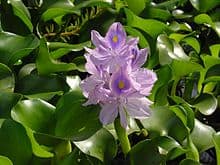
I had always been really interested in gardening, particularly in aquatic and floating plants. So when I finally had my own space to dabble in growing floating plants, I took a shot at it, only to make several rookie mistakes and my plants withered. But I have learned with trial and error and am now here with a complete beginner’s guide on how to correctly take care of floating plants.
So how can we take care of floating plants? In general, floating plants don’t require high maintenance, but they tend to grow very fast and thus need to be subjected to de-leafing. Ensure that the plants are aided in aeration by filtration systems, and that the floating direction is controlled.
Now while floating plants are among the easier plant types to grow at home in your aquarium or water garden, like all living beings, they also need some care and maintenance. Although a few specimens like duckweed grow fairly well on their own without human interference, others, like normal Salvinia, water lettuce and water spangles need more specific care.
Some care tips apply to all floating plants, and some are dedicated to particular plants that need it. Throughout caring for floating plants, it is extremely important to keep in mind that most of these plants, particularly water lettuce, hornwort and duckweed are notorious for being speedy growers and can very quickly choke the aquarium or aquatic garden they are in, if you don’t control it regularly. Their fast growth is also one of the reasons they are picked by water garden owners, but it can become a drawback quickly if care is not taken.
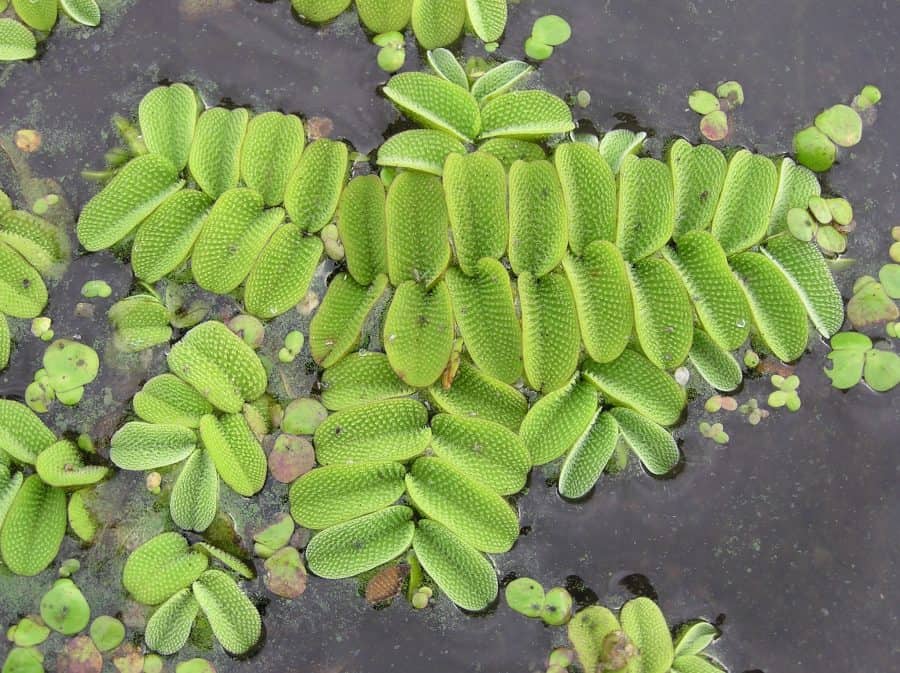
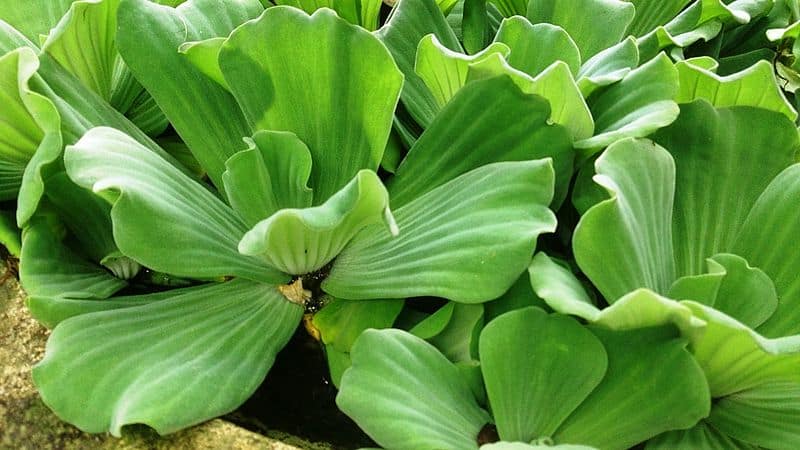
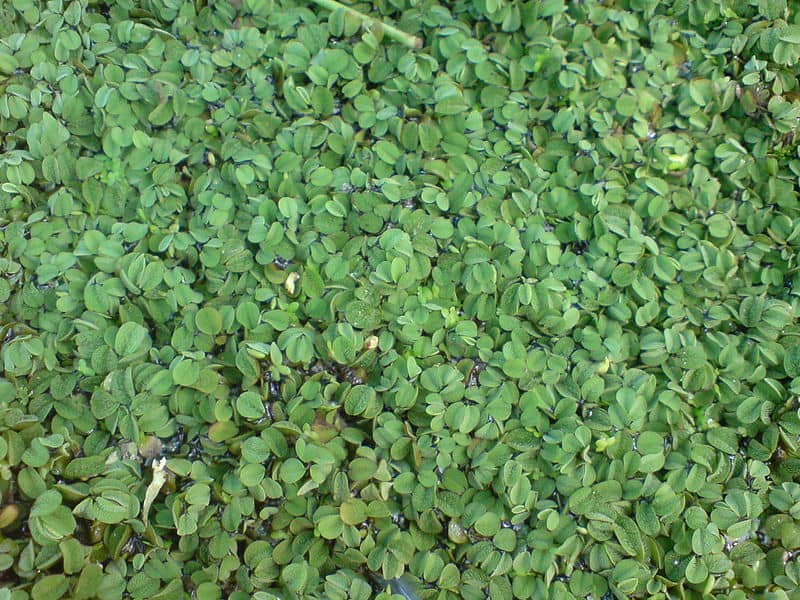
Care tips for different kinds of floating plants
To begin with, let’s consider why one would prefer floating plants over other kinds in the first place. Floating plants are some of the easiest plants to grow, particularly in the aquatic gardening practice. They are mostly self-sustaining and fuss-free, as well as inexpensive to maintain, which makes them an ideal choice for those looking for budget-friendly options, and for beginners as well. In an aquarium or water garden, floating plants are essentially a boon to the entire ecosystem of the space, and help in numerous ways.
Floating plants act as great aerators and help in filtering the aquarium or water garden for harmful chemicals and toxins. They regulate the pH balance and keep the nitrate level low so the other forms of life, such as fish, can thrive. These plants create shade for fish and other plants, and also provide food to the fish that are herbivorous. The surface and undergrowth of floating plants are excellent hiding spots as well as breeding ground for fish and other organisms co-habiting the space.
Finally, floating plants add more to the atmosphere of your tank or water garden by creating a more natural landscape for the fish, looking more pleasing to the eyes as well. Since floating plants are so beneficial and important to the water garden or aquarium, caring for these plants also becomes important.
Here are some tips to keep in mind when caring for floating plants-
Keep the plants in place
In aquariums and water gardens, there is high flexibility in the way the structures are designed and many people like to section them into cave portions, waterfalls, free space etc. While this is not a problem in itself, floating plants you put in the aquarium or garden may move or extend to sections you don’t want them in.
Floating plants have weak stems and can move from their initial positions due to many situations like rough weather, displacement due to water current, particularly when young. Some types of floating plants, like duckweed in particular, have demonstrated a tendency to slip out and move into any available space, creating restrictions and blockage. In such a case, these plants end up taking up a lot of space and prevent light and nutrients from reaching the rest of the tank or garden.
To solve this problem and ensure that your wayward floating plants get the care they need, you can use some airline, loop it to form a tight circle and seal the ends so that the loop stays that way around the floating plant. Hoops are available to buy in the market as well, and they come in different sizes, so there’s something to fit every floating plant. With a ring-structure to hold the plants in place, both the floating plant in question and the rest of the life in the tank or garden get all the care and nutrition they need.
Ensure proper trimming
![]()
Another important care tip, not just for hornwort, but for most floating plants, is that they thrive in direct sunlight and should receive a good measure of it daily. The water of the tank or garden should also be kept clear and clean regularly to boost the healthy growth of your floating plants as well as for the collective health of the whole ecosystem. Floating plants should always be trimmed and excess leaves removed from time to time as and when necessary.
Check for damage in the stems and separate sick plants
Since the stems of floating plants are considerably weak, these are the parts of the plants that are susceptible to damage, insect bites and infection. The leaves of the floating plants are generally safe from these dangers due to the waxy coating on them, but the stems remain unprotected. It is important to check regularly on the stems of floating plants for signs of damage or weakness, and administer medicine accordingly.
It is also a good idea to separate the injured or sick plant from the rest of the tank or garden, to protect the other plants and the fish that like to nibble on these plants, from risk of illness. You can always take out the concerned floating plant and temporarily transplant it in another container until it gets better.
Practice Re-potting
During growing season, when the water and climate are warmer and more welcoming, it is a good time to re pot and fertilize floating plants and all aquatic plants in general. There are care tips for repotting floating plants as well, such as being careful to watch out for algal bloom in the warm water and curbing it before it affects the plants. Care should be taken to ensure that the potting mix is the right fit for these floating plants, and that the roots of particular plants which are rooted, can hold on to the soil.
Meanwhile the mixture should also be lightweight so that the plants are actually able to float and be buoyant. Re-potting is a good practice to do every year or couple of years depending on the health of the plant. During this process, one can clip away or chop any excess parts of the plant that seem to be spreading unnecessarily, and parts that may show signs of damage.
Keep plants away from cleaning solutions
Floating plants in general might be tougher in constituency and more likely to survive inclement weather and harsh growing situations more than other plants, but they do need to be removed from the aquarium or garden whenever you add cleaning solution to that space to disinfect and purify. These plants are also susceptible to damage from chemical solutions like other plants.
Make arrangements for proper lighting
While lighting is important for floating plants to grow healthy and thrive, excess light, especially harsh sunlight and high temperature artificial lighting can do more harm than good. Excess heat and light can take away the moisture the plant needs, and despite living in an aquatic environment, the floating plant can dry out at the surface. In case of floating plants like water lettuce, the leaves turn yellow and the plant can suffer due to this.
To ensure that this doesn’t happen, and yet the plant receives adequate light and heat, the plant can be shifted to a cooler part of the garden. If the plants are in an aquarium, you may be able to shift the aquarium itself for this purpose. Otherwise, you could also keep tall plants like lilies as overhead shaders for the floating plants- just don’t cover them completely, or they won’t get any light at all.
It is important to note that the kind of light required by different floating plants is also different. In case of water spangles, for example, a special aquatic light designed for the aquarium will be required to nourish and sustain the plant adequately.
Keep fish that do not harm your floating plants
It should be noted that floating plants are also affected by their surroundings and the other inhabitants of the aquarium or garden, the most probable of those being fish. While floating plants are great for fish, providing food, shade and a natural ecosystem, the type of fish you keep in the tank or garden may not always benefit the plants.
Koi fish in particular are known to be nibblers, gnawing away at the roots of the floating plants and weakening them. As it were, aquatic plants do not have strong roots, especially floating plants that rely on the strength and surface of their leaves for stability rather than on their stem and roots. It can be hard to prevent koi from nibbling on the plant roots, but what you can do is separate the sections so that the fish can access only the leaves and not the stem or roots.
Lava rocks are supposed to feel uncomfortable for koi to chew on, so one option could be to surround the floating plants with a ring of lava rock and pebbles to protect the leaves. An alternative could be to have other fish such as goldfish in that section of the garden. They would be less likely to chew on the roots.
Properly manage aggressive fish
Floating plants are greatly beneficial for fish of different kinds as they offer not only shade, but also food in the form of their leaves. However, some species of fish are very destructive and can tear the plants to shreds quickly, leaving you frustrated and with no option than to get new plants or forget about having aquarium plants at all.
However, this is not a major cause for worry as this issue can be easily solved. One option is to grow the floating plants sectioned off in a part of the tank or garden where the fish can’t reach them, and then throw in clusters of leaves for the fish separately. This will protect the floating plants from damage. However if you want your fish to have their fill of leaves naturally, and want to retain the plants where they are, just use the speediest growing floating plants like hornwort and duckweed, which will scarcely run out since it spreads so quickly.
Stay clear of mosquito infestation
While the leaves and surface of floating plants like water lettuce are indeed great spots for fish to play around and even breed, they also make a great breeding ground for mosquitoes, and very quickly you could have an infestation at your hands. Too many mosquitoes in the garden or aquarium will lead to a decline in the ecosystem’s health and is of course very unhygienic and risky for your health and that of anyone else living with you.
A good practice is to engage in regular pest control and check for mosquitoes as well as larvae in the water, above the surface and particularly on the leaves of the floating plants. If you find any growing on the plants’ leaves, it is recommended to chop those leaves off and maybe even separate the plant from the tank or garden for a while. If you are deep cleaning the garden or tank, take out the fish and all plants from there and transplant them for the time being while doing so.
Administer external fertilizers as required
It is known that floating plants grow quickly and often easily since they get a lot of their required nutrients from the water, sunlight and environment without needing much human interference. However, despite deriving many of their nutrients from sunlight, heat, nitrates in the water and phosphates released in the ecosystem, floating plants may still fall short of nutrition. Such plants with deficiency will turn yellow at the leaves, or will just grow sluggishly or in a stagnant manner, which is easy to notice since these plants generally grow rapidly.
Thankfully, the solution to this nutrient problem is easy enough. Compound fertilizer does a good job at replenishing the nutrients needed by these plants by providing them with NPK (Nitrogen Phosphorous Potassium), iron and other required elements. It is important to ensure that these floating plants get the nutrition they need regularly, as fish breeding sometimes creates a lack of nutrients. As a result, the plants may cause further nutrient depletion for the whole ecosystem in their attempt to get more for their own survival. Providing a healthy balance of NPK and necessary macro-nutrients give the floating plants a healthier appearance and longer life in the tank or garden.
Keep nitrate levels in control
Floating plants are known to be quite helpful in lowering the nitrate levels in the water. However, sometimes the nitrate level may get higher than it is feasible for the plants to fix, and this can lead to the plants getting sick because of excess nitrate. So one must remember to change the tank water regularly, recommended once every fortnight, or to at least refresh 15-20% of the tank water weekly. This will keep the nitrate levels in check and also make it easier for the floating plants to control nitrate content.
Maintain distance from fountain or waterfall
If you keep floating plants in water garden where there are also waterfalls or fountains, make sure to keep the plants at a distance from the fountain/waterfall. Regular splashing from these fixtures can damage the leaves of floating plants like water lettuce, and may cause rotting due to the stagnant water accumulation. Alternatively, you could always regulate the flow and splashing of the fountains or waterfall by changing the placement of rocks and attaching lining. However it is just easier to keep the floating plants separately.
Drive away aphids if there are any
In backyard ponds and outdoor water gardens, aphid infestation can become a problem for floating plants and for the entire ecosystem in general. Aphid infestation generally starts on yellowing leaves or on newly growing floating plant leaves.
The solution is to try and nip the infestation in the bud; you can make oil sprays with vegetable oil and dish washing soap, spraying it on the plants in the evening every 10 days and then washing it off in the morning. It is important to rinse off thoroughly so that the plants and other living beings like fish in the pond/garden are not adversely affected by residue.
Opt for natural means, if treatment is required
In terms of treatments done to cure diseased or infested floating plants, it is wise to attempt the most natural means of treatment before advancing to chemical use if the first method does not work. Solutions like diatomaceous earth are natural solutions and won’t ruin the pH balance in the pond or garden, but pesticides and insecticides will, so be wary before using those.
Never assume that one size fits all when it comes to chemical treatments, as some sprays or solutions are meant only for terrestrial plants or specific aquatic plants, and floating plants can get damaged if you use these on them. For floating plants and other aquatic plants, solutions and sprays are best applied towards the evening, at the end of the day, when absorption levels of the plants are higher, there is less risk of damage by UV, and the wind speed is lower.
Protect your plants from animal intruders
If you have a dog, beware of the animal jumping into the pond or garden. This obviously won’t happen with aquariums since the dog can’t jump in, but many dogs love to take a dip at your backyard garden or pond. The movement caused by the dog’s entry can easily displace the weak roots and stems of the floating plants, and must be avoided.
A garden or pond containing floating plants, in addition, should also be protected from intrusive rodents and raccoons in case of outdoor setting. You could build a small fence around the pond or garden to provide this protection- it doesn’t have to be a heavy-duty electric fence, unless you specifically want one. A simple but high and sturdy fence will do to protect the pond and its floating plants from rodents.
Easy floating plants for beginners to grow
Although floating plants are basically low-maintenance, beginners in aquatic gardening may still wonder which ones to pick for their first time handling such plants. Some floating plants require more care and maintenance than others, so those can be avoided by beginners. Here are some floating plants that are ideal for beginners-
Amazon Frogbit

The Amazon Frogbit is really easy to grow and is ideal for aquariums and gardens that house betta fish in it. The fish love the frogbit plant, particularly the shade it provides and the natural environment it creates with its pretty and large-sized rosettes.
Java moss

Forming a fluffy, spread-out surface cover, the java moss is an attractive option particularly for the aquarium, since it needs such less maintenance and grows well in medium lighting. Java moss is also incredibly hardy and does not die easily, so it’s a good addition to an aquarium. It is very helpful in covering substrate as well as creating carpeting in the tank.
Duckweed
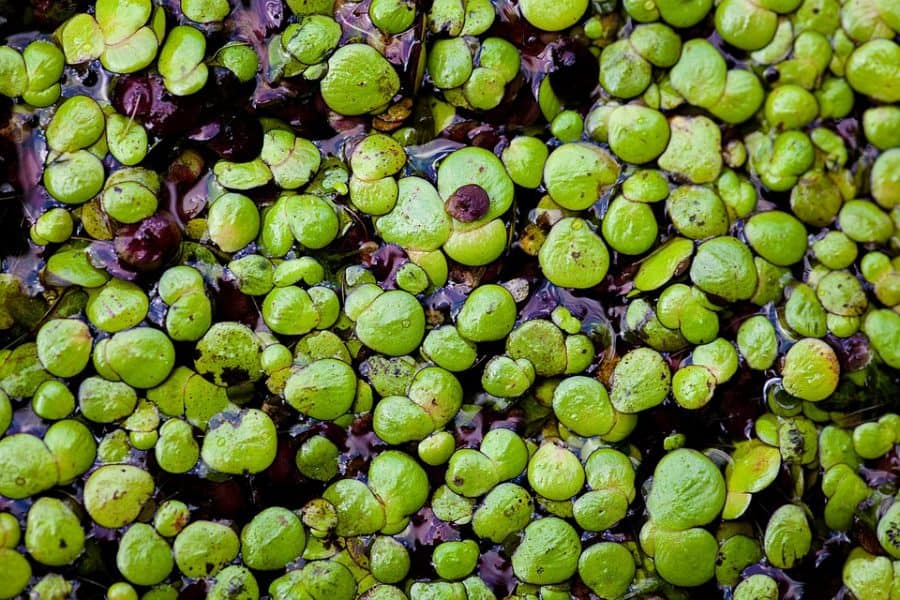
One of the most common floating plants, duckweed is great for small aquariums and tanks as it has small leaves and gives a pretty frog-pond like appearance to the tank. It does grow very rapidly though, so it is recommended to cut off portions every couple of weeks and to keep a lid on the aquarium so that the plant doesn’t grow outside the walls.
Cabomba
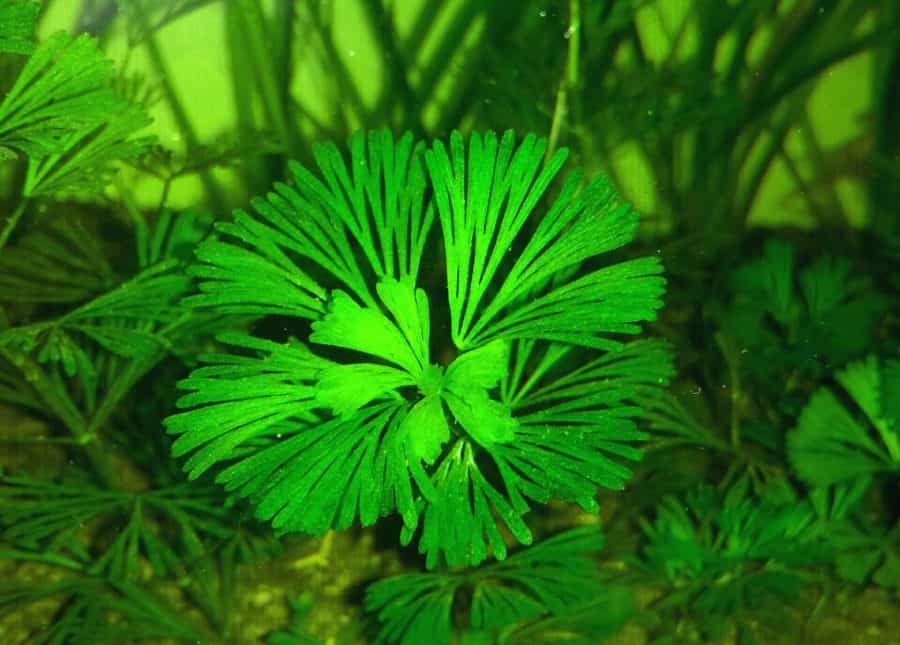
Overlooked as a weed in many countries, the cabomba can actually make a surprisingly good addition to the water garden and in particular, the aquarium. Cabomba is best left free to float as it may get uprooted from the substrate often, but is a popular option among small fish as it is dense all around but still offers room to hide when needed. It certainly makes an interesting addition to the tank.
Overlooked as a weed in many countries, the cabomba can actually make a surprisingly good addition to the water garden and in particular, the aquarium. Cabomba is best left free to float as it may get uprooted from the substrate often, but is a popular option among small fish as it is dense all around but still offers room to hide when needed. It certainly makes an interesting addition to the tank.
Floating plants you should avoid growing
At this point it is probably wise to also mention floating plants which are not ideal for water gardens and aquariums, even though they may look attractive enough. One such plant is the water hyacinth, which produces beautiful pale purple flowers and is very pleasing to look at. While this plant is easy enough to grow- all you have to do is scatter some plants on the water surface and they soon begin to grow- it multiplies really fast and can choke the entire garden or tank in a matter of days. Water hyacinth is actually considered invasive in many parts of the US and other countries where waterways have been completely choked by these plants.
However if you really want to grow water hyacinth because of how good it looks, it is advised that this floating plant should be grown in an isolated container separated stringently from the rest of the tank or garden. It should also be noted that water hyacinth can be incredibly toxic to animals like dogs, cats and horses, so take care if you have any pets, that they don’t go anywhere near this.
Another invasive floating plant you may find commonly growing in waterways and natural water bodies is hydrilla. You are not likely to find these plants being sold or grown for propagation, and that is good, since hydrilla is extremely fast growing and invasive and is known as one of the worst aquatic weeds in the world.
Related Questions
Which floating and aquatic plants are ideal for betta fish?
Betta fish love floating plants in particular, enjoying snacking on duckweed, water lettuce and Amazon frogbit. Other aquatic plants preferred by betta fish are java fern, Morimo moss balls and the Anubias Nana.
Is Water Sprite a floating plant?
A type of aquatic fern, the Water Sprite can be grown both as a floating plant as well as in a rooted form. Water Sprite is however, best kept in floating form as it creates great cover and shade for fish in the tank and are lovely to look at.
Are floating plants edible?
Some floating plants are edible, for example duckweed, which makes great salad garnishing. While water lettuce is also edible after cooking, but it is not recommended as it may cause itching in the mouth and throat.